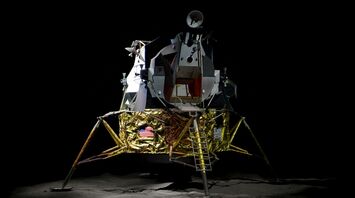Boeing Starliner: What to Expect Ahead of the Crewed Launch

NASA's Boeing Starliner is gearing up for its final test flight, despite a recent delay due to a small helium leak. The launch, initially set for May 21, has been postponed to May 25 at the earliest. This highly anticipated mission will mark another step forward for Boeing in the commercial space sector.
Starliner Launch Delayed by Helium Leak
A helium leak in the Starliner spacecraft's service module caused the delay. Discovered during a May 6 countdown test, the leak was traced to a flange on a reaction control system thruster. Boeing's Starliner program manager, Mark Nappi, emphasized the need for everything to be flawless before launch. Subsequent pressure testing indicated that the leak is stable and the rest of the thruster system is effectively sealed.
Challenges and Setbacks
Boeing's Starliner has faced numerous challenges since its inception. Despite a decade-long $4 billion contract under NASA’s Commercial Crew Programme, the spacecraft has encountered issues including a failed mission in 2019 due to a clock error and thruster problems in 2022. These setbacks have repeatedly delayed the spacecraft's first crewed test flight, originally planned for 2017.
Upcoming Test Launch
The forthcoming test launch will carry NASA astronauts Butch Wilmore and Suni Williams to the International Space Station (ISS). The mission, which is expected to last around a week, will see the astronauts return to Earth via a parachute and airbag-assisted landing in the southwestern United States. A successful mission will pave the way for NASA to certify the Starliner for crewed rotation missions to the ISS, with the first operational mission, Starliner-1, planned for 2025.
Starliner Specifications and Capabilities
The Boeing Crew Space Transportation (CST)-100 Starliner is a reusable crew capsule designed for low-Earth orbit missions. It can carry up to seven passengers or a mix of crew and cargo and is intended to be reusable for up to ten missions with a six-month turnaround time. The capsule, which has a diameter of 15 feet, is larger than SpaceX's Crew Dragon but smaller than NASA’s Artemis Orion capsule.
The Starliner is fully autonomous, capable of detecting, isolating, and responding to faults with redundant systems. It features advanced automation akin to sophisticated cruise control, allowing astronauts to focus on their mission.
Boeing’s Role in Space Exploration
Boeing continues to play a significant role in space exploration alongside other companies like SpaceX. In addition to the Starliner, Boeing developed the X-37B orbital spaceplane, a reusable robotic spacecraft for the US Air Force. NASA, meanwhile, is advancing its Artemis program, aiming to return astronauts to the Moon and eventually send humans to Mars. The next Artemis mission is slated for September 2026.
Bottom Line
The upcoming launch of the Boeing Starliner represents a critical milestone for NASA and Boeing in their commercial crew endeavors. Despite the delays and technical challenges, the successful completion of this test flight will be a major achievement, moving closer to routine crewed missions to the ISS and beyond.



















